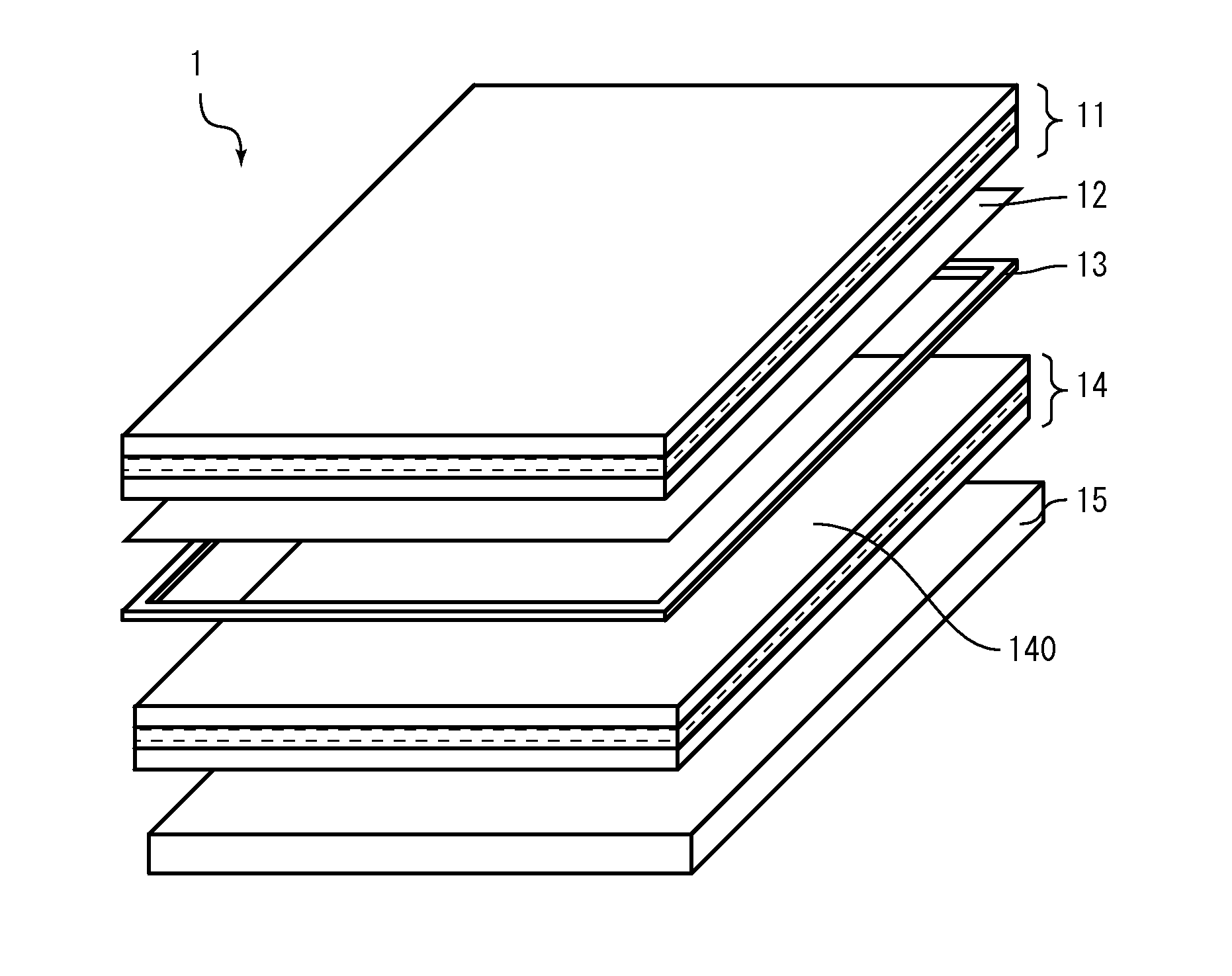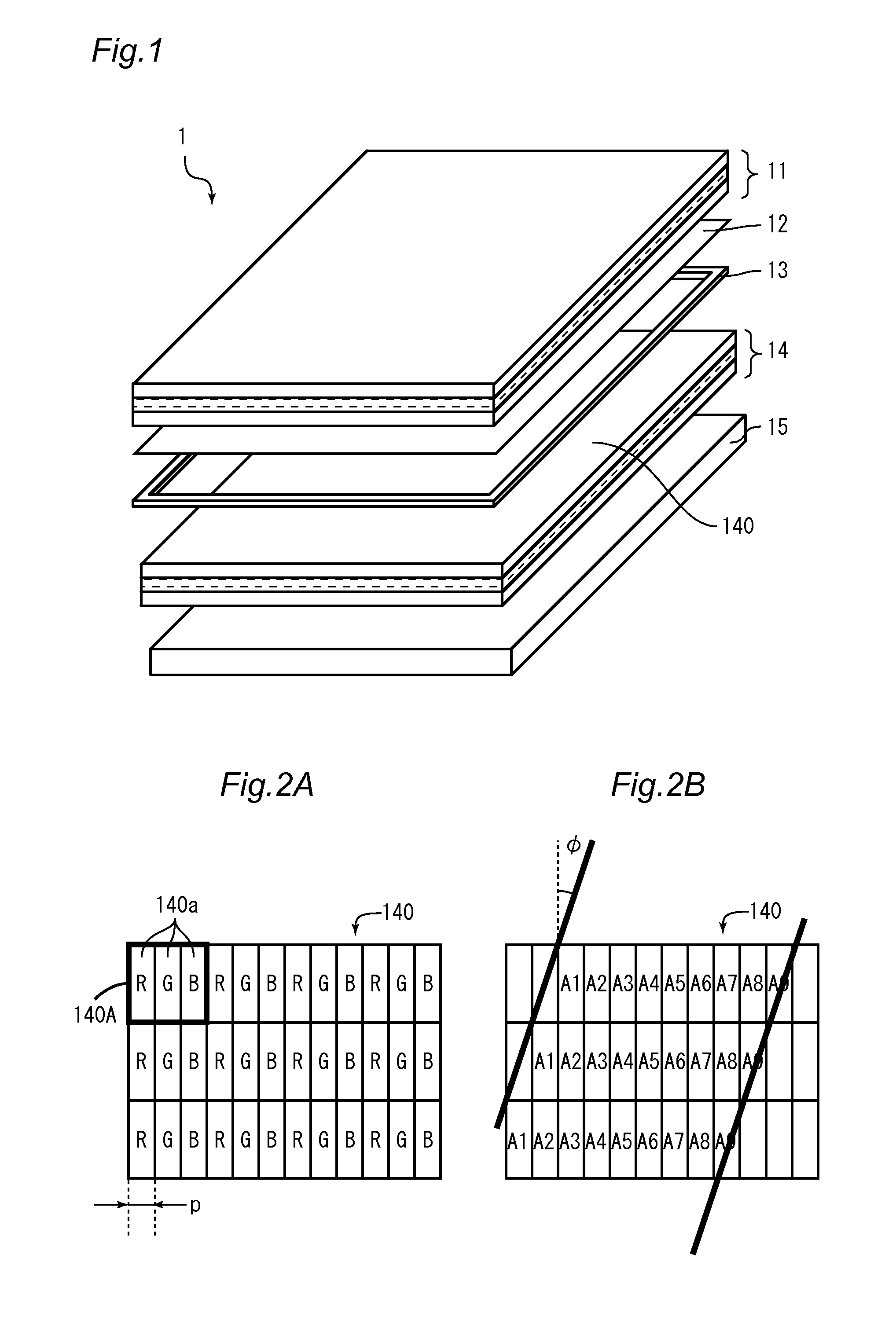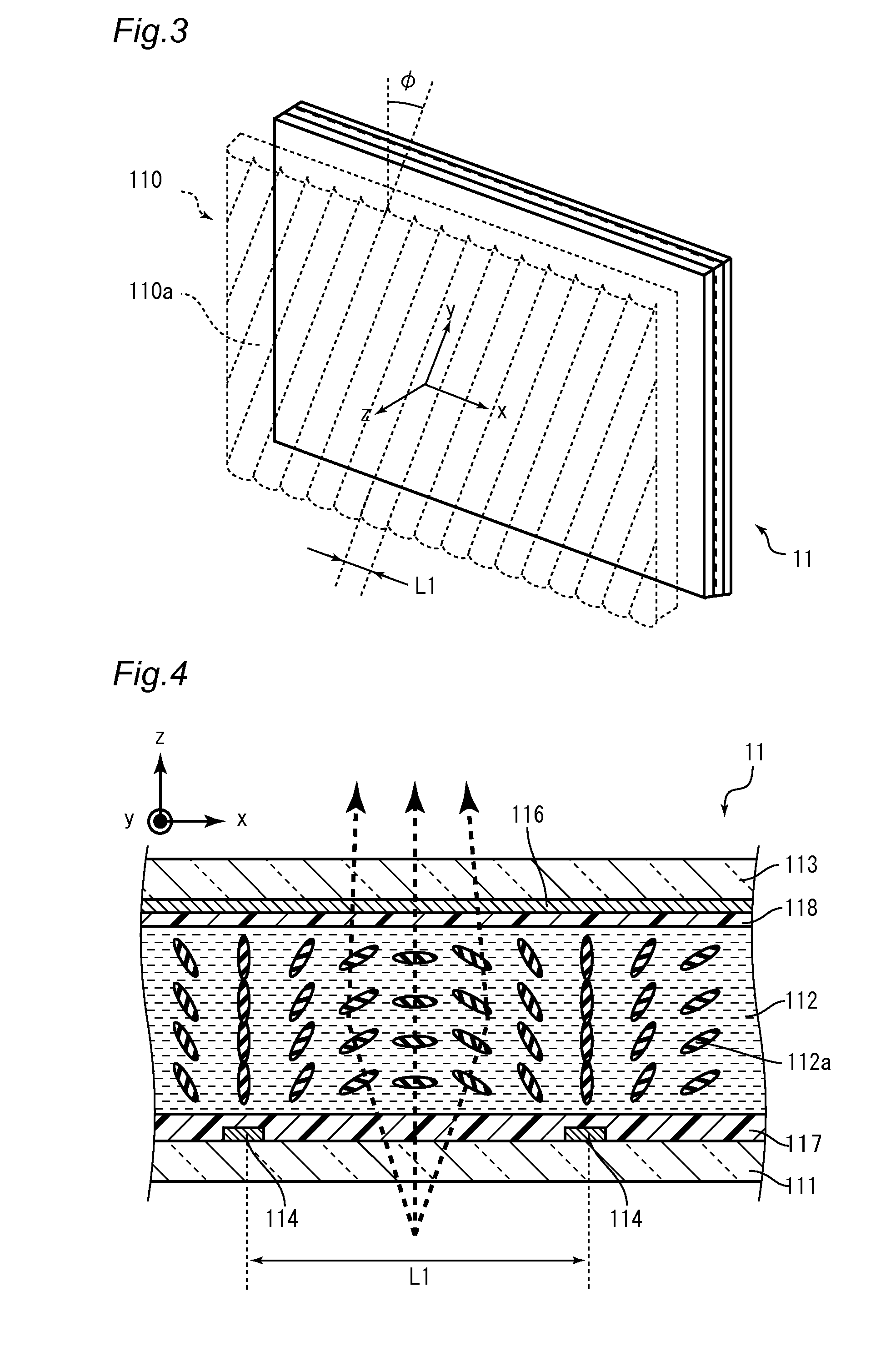Stereoscopic display device
a stereoscopic display and display device technology, applied in the field of stereoscopic display devices, can solve the problems of viewer discomfort or tiredness, inability to perceive a proper stereoscopic image, etc., and achieve the effect of responding sufficiently quickly
- Summary
- Abstract
- Description
- Claims
- Application Information
AI Technical Summary
Benefits of technology
Problems solved by technology
Method used
Image
Examples
embodiment
[0037]Now, embodiments of the present invention will be described in detail with reference to the drawings. The same or corresponding components in the drawings are labeled with the same characters and their description will not be repeated. For ease of understanding, the drawings to which reference will be made hereinafter show simplified or schematic representation, or do not show some components. The size ratios of the components shown in the drawings do not necessarily represent the actual size ratios.
[0038]FIG. 1 is an exploded schematic perspective view of a stereoscopic display device 1 according to an embodiment of the present invention. The stereoscopic display device 1 includes a liquid crystal lens 11, a retarder 12, a spacer 13, a liquid crystal display 14, and a backlight 15.
[0039]Each of the liquid crystal lens 11 and liquid crystal display 14 is in the shape of a plate that is generally rectangular in a plan view, and includes main faces (i.e. the set of opposite face...
first embodiment
[0096]A stereoscopic display device 1 is designed where the inter-viewpoint distance E=16.25 mm, the number of viewpoints N=9, and the liquid crystal display 14 is a full high-definition (resolution: 1920×1080 pixels) display with a diagonal size of 42 inches (1066.8 mm). The liquid crystal display 14 has square pixels 140A, each divided equally into red, green and blue subpixels 140a arranged in a horizontal direction. Then, a pixel 140A has a side of about 484.5 μm, and the interval p of the subpixels 140a as measured in a horizontal direction is about 161.5 μm. Angle φ is 18.4°.
[0097]Generally, the optimum distance from which to view the display is three times the vertical size of the display. Now, a design of various elements will be described based on the condition that the optimum viewing distance S2 is 1.6 m.
[0098]Equation (2) gives S1=14.902 mm. Equation (3) gives L=1439.199 um, and Equation (1) gives L1=1365.342 μm. Further, Equation (4) gives f=14.745 mm.
[0099]A case will ...
second embodiment
[0102]In the first embodiment, a case where the viewing distance S2 is longer than its normal value has been discussed. Next, a case where the viewing distance S2 is smaller than its normal value will be discussed.
[0103]When the viewing distance S2 is smaller, reductions in the inter-viewpoint distance E must be taken into consideration. As the inter-viewpoint distance E decreases, the viewing range VR decreases, as well (see FIG. 8). If the viewing range VR is smaller than the distance between the eyes (generally assumed to be 65 mm), a stereoscopic image cannot be viewed. Thus, for 9 viewpoints, for example, the inter-viewpoint distance E must be at least 65 mm / 8=8.125 mm or larger. To give some margin to this value, a stereoscopic display device 1 is designed such that the inter-viewpoint distance E for viewing at the smallest viewing distance S2 is 16.25 mm.
[0104]For example, if a stereoscopic display device 1 is designed that can be viewed properly when the viewing distance S2=...
PUM
 Login to View More
Login to View More Abstract
Description
Claims
Application Information
 Login to View More
Login to View More - R&D
- Intellectual Property
- Life Sciences
- Materials
- Tech Scout
- Unparalleled Data Quality
- Higher Quality Content
- 60% Fewer Hallucinations
Browse by: Latest US Patents, China's latest patents, Technical Efficacy Thesaurus, Application Domain, Technology Topic, Popular Technical Reports.
© 2025 PatSnap. All rights reserved.Legal|Privacy policy|Modern Slavery Act Transparency Statement|Sitemap|About US| Contact US: help@patsnap.com



